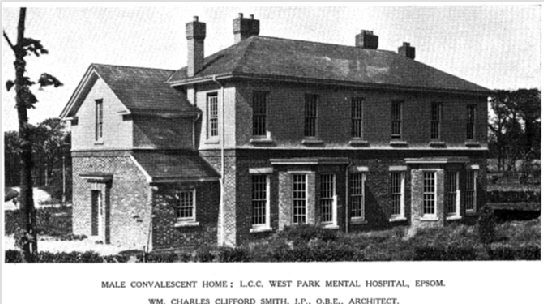Research
Rest and Restitution: Convalescence and the Public Mental Hospital in England, 1919-39
Overview of research questions
My research explores the changing place of convalescence and psychiatric recovery in the public mental hospital system and wider community. In particular, my thesis has analysed the contestation of convalescence as a category that defined not only the personal health of the individual patient but also their identity and belonging as patients and citizens. The liminal position of convalescents set these patients apart. Neither sick enough to warrant continued hospitalization, nor sufficiently well to fully participate in occupational or domestic life, the convalescent challenged dualistic conceptions of psychiatric treatment that distinguished between opposed categories of sickness/ health. Where did such patients belong and who decided? Mental hospital superintendents and planners? Charity workers and cottage home managers? Families, 'convalescent' patients themselves? How far did these diverse groups see convalescence as the same thing and who held definitional power over what constituted recovery? What purposes did convalescence serve? And why did provision for convalescence grow between the wars? These questions are at the heart of my research.
The borderland of convalescence
Interwar debates over mental hospital reform and practice suggest convalescence may have reflected social and institutional ills, as much as the health of patients themselves. On one hand Montagu Lomax declared in 1921 that asylums exposed patients to 'a general atmosphere of lunacy'; on the other voluntary groups warned of the dangers 'a world of work and worry' posed to those in the fragile early stages of recovery. Seen from these perspectives, which mirrored a concern for the environmental determinants of mental health, convalescence perhaps offered an oasis of sanity in a mad world. Equally, however, the label 'convalescent' could be attached to patients to justify the continuance of psychiatric observation. Whilst convalescence denoted a phase of tentative improvement, the threats that might imperil this improvement remained open to interpretation. Was it the alienating asylum or the interfering family that posed the greatest danger to mental health?
Sources and methodology
My research applies Ian Hacking's approach to classifications as 'interactive kinds' that reflect the varied and potentially competing interpretations of the classifier and classified. It engages with a dynamic area of scholarship in the history of psychiatry that has sought to reinstate the patient's voice and perspective into evaluations of treatment (including A. Beveridge, C. Coleborne, L. Wannell, L. Smith). As such, it sets patient responses interpreted from case-records and autobiographical sources alongside the interpretations of those who planned and managed mental hospital convalescent services to assess the range of functions the convalescent home served in this period.
The interactive interpretation of the category of convalescence is spatially contextualised in the context of those homes and buildings purposefully-assigned for recuperative care. Two sites in particular provided a (relatively) fixed sphere for the performance of convalescence, which defined the spatial relationship of the convalescent with medical and social practices in the interwar period: (1) the convalescent villa (often as part of 'early treatment centres') within mental hospitals and (2) the cottage home in the community, managed through the voluntary sector but often privately managed. Provision for such homes emerged particularly in relation to the London County Council's mental hospitals and Westminster-based Mental After-Care Association. My thesis consequently focuses on London as a case-study within the broader contexts of English mental hospital planning.
Contemporary significance
There are contemporary policy implications to this research. The role given to patients in the interpretation of ‘recovery’ within the modern recovery movement reflects a concern that notions of psychiatric improvement should at least partially incorporate the ambitions, experiences and values of patients themselves. Historical research into psychiatric convalescence offers to contextualise these efforts. It offers to provide a better understanding of the relationship between notions of psychiatric wellness and the historically-defined social and cultural environment in which they are evaluated.

A therapeutic environment?: Male Convalescent Villa, built 1924

